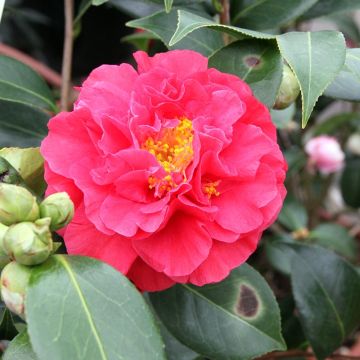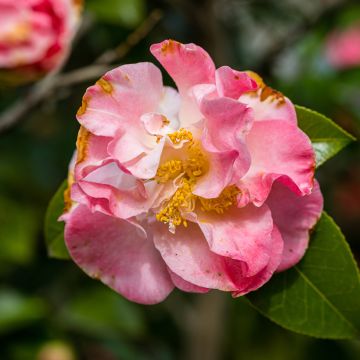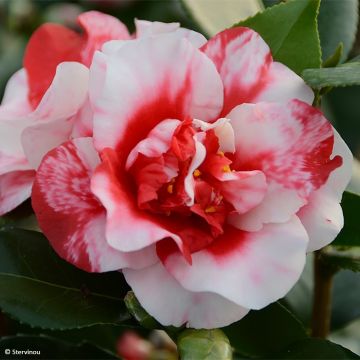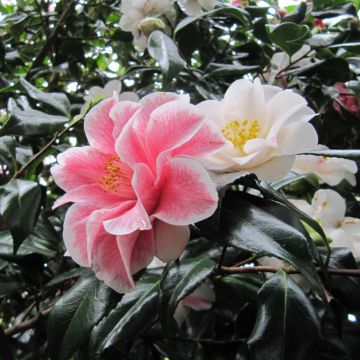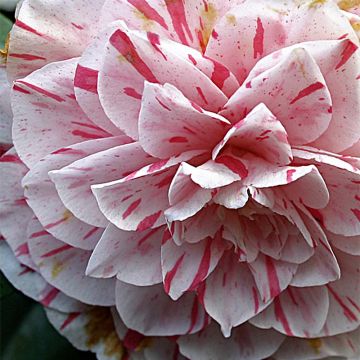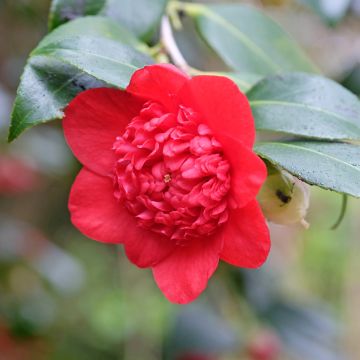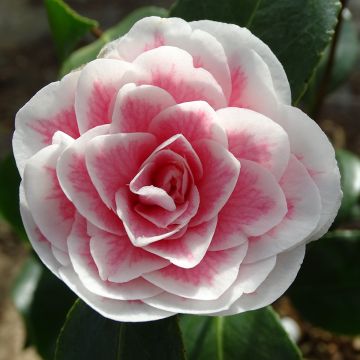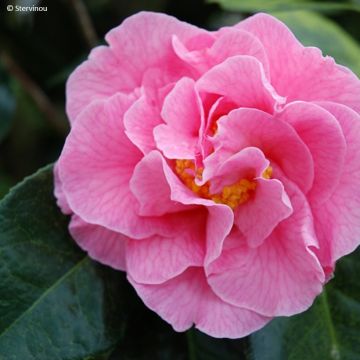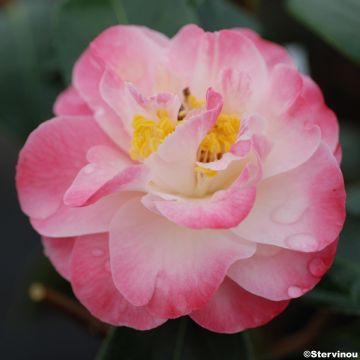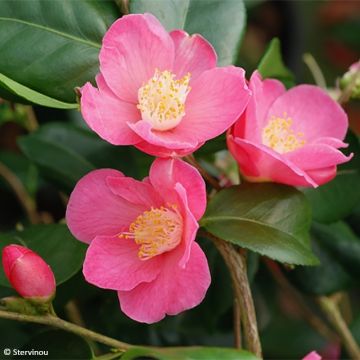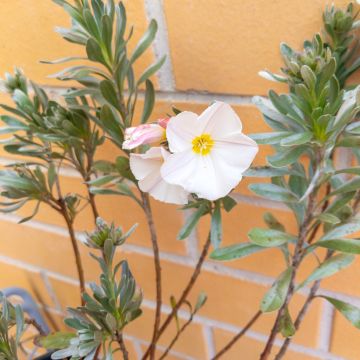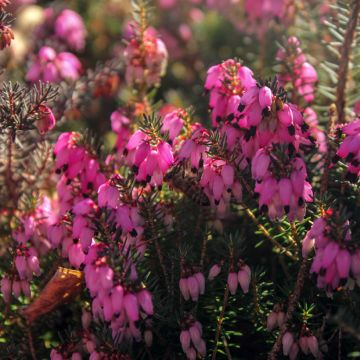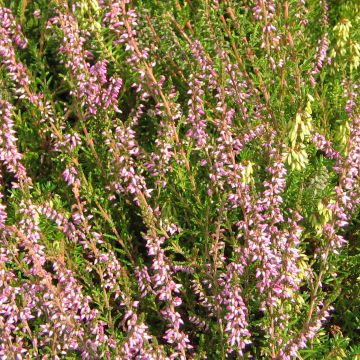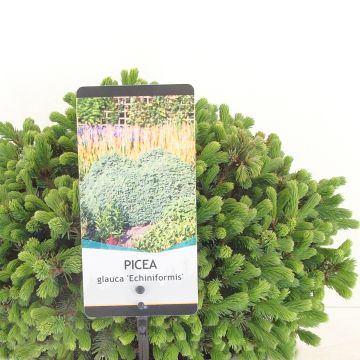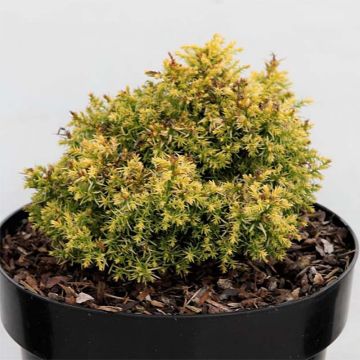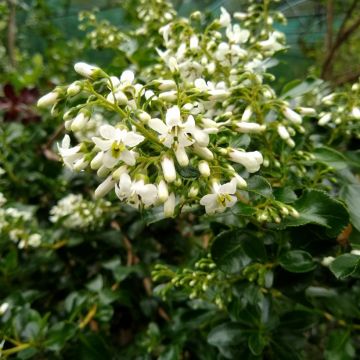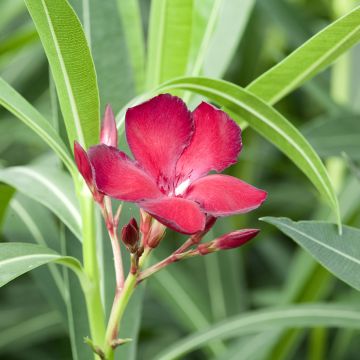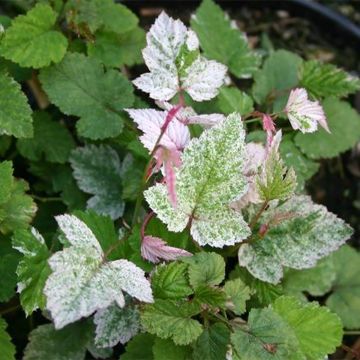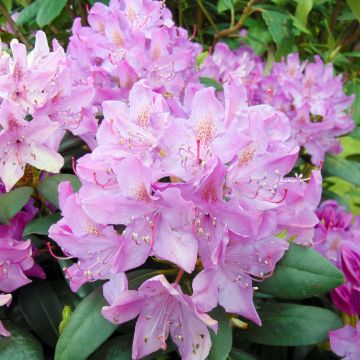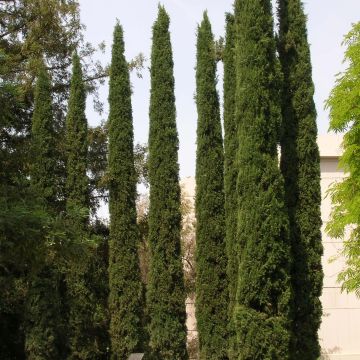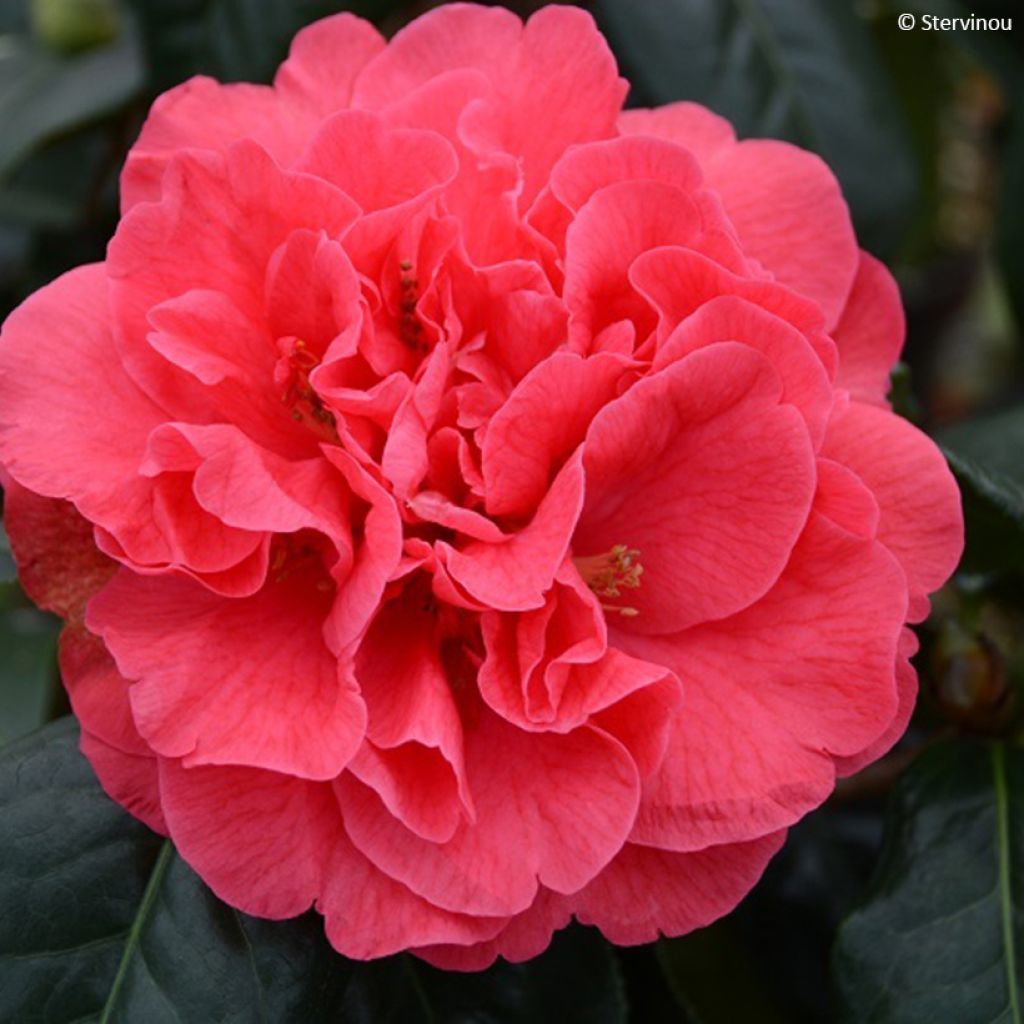

Camellia x reticulata Den Burton
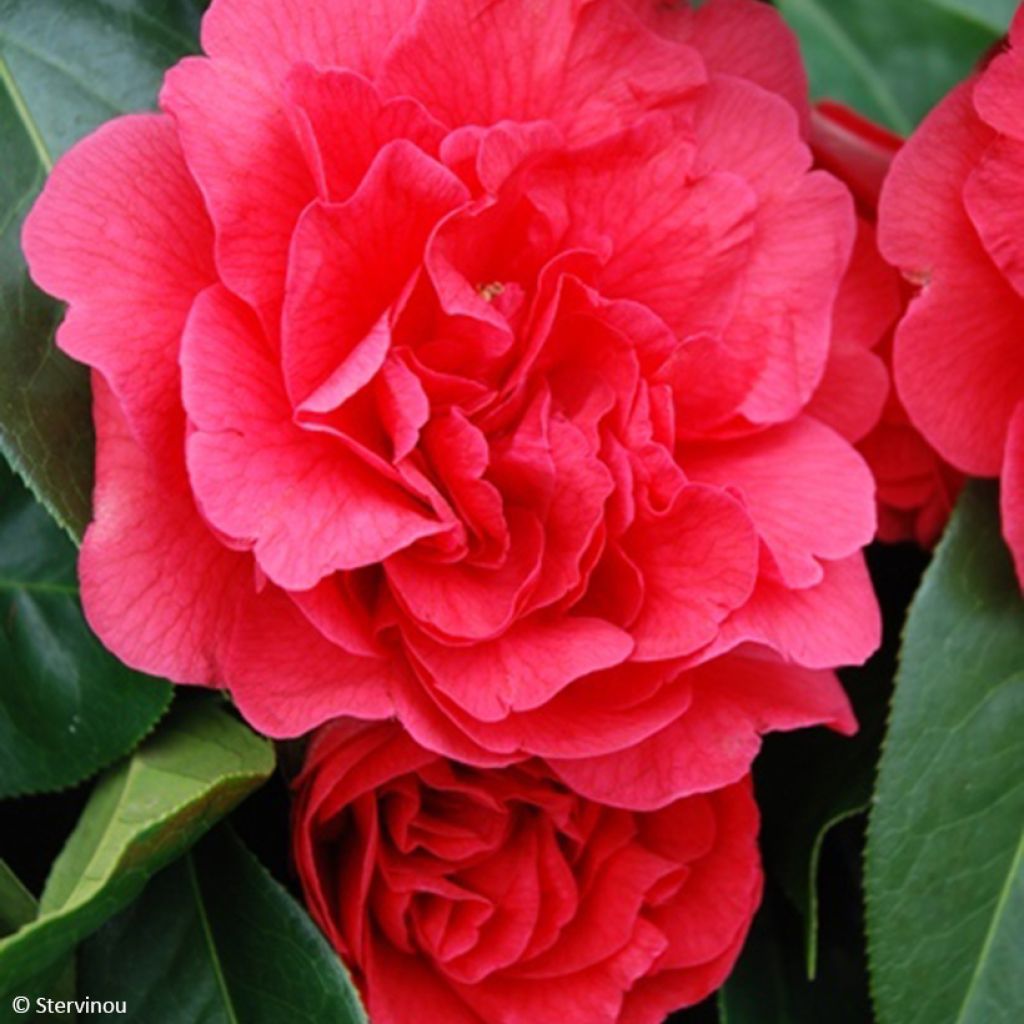

Camellia x reticulata Den Burton
Camellia x reticulata Den Burton
Camellia x reticulata Den Burton
This item cannot be shipped to the selected country
Delivery charge from €5.90
More information
Schedule delivery date,
and select date in basket
This plant carries a 24 months recovery warranty
More information
We guarantee the quality of our plants for a full growing cycle, and will replace at our expense any plant that fails to recover under normal climatic and planting conditions.
From €5.90 for pickup delivery and €6.90 for home delivery
Express home delivery from €8.90.
Does this plant fit my garden?
Set up your Plantfit profile →
Description
The Camellia reticulata 'Den Burton' is probably a natural hybrid between two species, selected in New Zealand. Of moderate growth, it forms a relatively bushy, upright bush. Its foliage consists of very elongated, dark green leaves that provide a perfect background to enhance the flowering. The flowering starts around February and attracts admiration, as the flowers, whose shape resembles that of peonies, irresistibly catch the eye with their bright red colour. It is especially their size that fascinates, as they can reach 13 cm in diameter. This superb bush thrives in slightly acidic, moist soils, as well as in a location protected from too intense sunlight. It can also be grown in a container if the soil is not suitable.
The Camellia belongs to the Theaceae family, with the most famous member being the Camellia sinensis, whose leaves are used to produce tea. This small plant family hosts a few other ornamental plants, such as Franklinia alatamaha or Stewartia, whose flowers betray their relationship with Camellias. The Camellia is a large genus, rich according to botanical classifications with a hundred to 250 species, originating from Asia. Adored by the Japanese and many garden enthusiasts and breeders, the Camellia now comes in no less than 40,000 varieties!
'Den Burton' comes from a "chance seedling" selected in New Zealand by N. Haydon, and registered as a new variety in 1999. It is probably the result of a natural cross-breeding between the famous Camellia japonica, or Japanese Camellia (although initially cultivated in China), and the much less known Camellia reticulata. The latter is native to the predominantly subtropical Chinese provinces of Sichuan and Yunnan, where it grows to form a large bush or even a tree 10 to 15 m high, with flowers usually pink, blooming late from March to May.
'Den Burton' has a much more modest growth since, after 10 years of planting, it will reach approximately 1.60 m in height by 1 m in width. Its silhouette is distinctly upright and its habit relatively dense. Its foliage is closer to that of C. reticulata than C. japonica, with very elongated leaves, measuring 12 cm in length by only 5 cm in width. Their surface is slightly glossy, but less glossy than most Camellia japonica cultivars. Its flowering period is between February and April, placing it between early and late varieties. It produces huge flowers, 13 cm in diameter by 8 cm in height, with numerous elaborate petals that unmistakably evoke the flowers of certain peonies. They are a bright, vivid red, standing out remarkably against the dark vegetation. The petals are so numerous that they usually conceal the stamens.
The Camellia 'Den Burton' stands out for its splendid flowering that brightens the garden in late winter. Its evergreen foliage remains ornamental all year round and helps highlight other flowerings. Plant it alongside the small Magnolia stellata, whose magnificent star-shaped flowers in immaculate white will unfold at the same time, creating an unforgettable combination. Also, pair it with Rhododendrons and Azaleas, whose flowerings will follow its lead and come in a multitude of colours depending on the varieties. And to bloom your summer, choose from the vast range of Hydrangeas, such as Hydrangea macrophylla 'Blue Wave' with its stunning blue flat flowers.
Report an error about the product description
Plant habit
Flowering
Foliage
Botanical data
Camellia
x reticulata
Den Burton
Theaceae
Cultivar or hybrid
Other Traditional Camellia
Planting and care
The Camellia 'Den Burton' thrives in full sun in favourable climates, such as in Atlantic regions; however, it performs best in partial shade, protected from harsh sunlight and sheltered from strong winds. Plant it in a cool, humus-bearing, acidic, and well-drained soil. Avoid planting the bush too deeply; the top of the root ball should be covered by 3 cm of soil. In winter, cover it with a 5 to 7 cm thick mulch made of leaf compost and crushed bark. Beware of late frosts that can damage the flowers and buds. During dry periods, water the bush to prevent flower bud drop. It is recommended to plant the camellia in autumn to promote good root development and better flowering in the first year. Possible diseases include chlorosis due to excess limestone, brown spots caused by burns on leaves exposed to full southern sun, and sooty mould. As for insects, scale insects and vine weevils may attack it.
Pruning is not necessary and should only be done if needed just after flowering, before the onset of new spring shoots, and sparingly. Most camellia hybrids do not recover from overly severe pruning.
Planting period
Intended location
Care
This item has not been reviewed yet - be the first to leave a review about it.
Evergreen shrubs
Haven't found what you were looking for?
Hardiness is the lowest winter temperature a plant can endure without suffering serious damage or even dying. However, hardiness is affected by location (a sheltered area, such as a patio), protection (winter cover) and soil type (hardiness is improved by well-drained soil).

Photo Sharing Terms & Conditions
In order to encourage gardeners to interact and share their experiences, Promesse de fleurs offers various media enabling content to be uploaded onto its Site - in particular via the ‘Photo sharing’ module.
The User agrees to refrain from:
- Posting any content that is illegal, prejudicial, insulting, racist, inciteful to hatred, revisionist, contrary to public decency, that infringes on privacy or on the privacy rights of third parties, in particular the publicity rights of persons and goods, intellectual property rights, or the right to privacy.
- Submitting content on behalf of a third party;
- Impersonate the identity of a third party and/or publish any personal information about a third party;
In general, the User undertakes to refrain from any unethical behaviour.
All Content (in particular text, comments, files, images, photos, videos, creative works, etc.), which may be subject to property or intellectual property rights, image or other private rights, shall remain the property of the User, subject to the limited rights granted by the terms of the licence granted by Promesse de fleurs as stated below. Users are at liberty to publish or not to publish such Content on the Site, notably via the ‘Photo Sharing’ facility, and accept that this Content shall be made public and freely accessible, notably on the Internet.
Users further acknowledge, undertake to have ,and guarantee that they hold all necessary rights and permissions to publish such material on the Site, in particular with regard to the legislation in force pertaining to any privacy, property, intellectual property, image, or contractual rights, or rights of any other nature. By publishing such Content on the Site, Users acknowledge accepting full liability as publishers of the Content within the meaning of the law, and grant Promesse de fleurs, free of charge, an inclusive, worldwide licence for the said Content for the entire duration of its publication, including all reproduction, representation, up/downloading, displaying, performing, transmission, and storage rights.
Users also grant permission for their name to be linked to the Content and accept that this link may not always be made available.
By engaging in posting material, Users consent to their Content becoming automatically accessible on the Internet, in particular on other sites and/or blogs and/or web pages of the Promesse de fleurs site, including in particular social pages and the Promesse de fleurs catalogue.
Users may secure the removal of entrusted content free of charge by issuing a simple request via our contact form.
The flowering period indicated on our website applies to countries and regions located in USDA zone 8 (France, the United Kingdom, Ireland, the Netherlands, etc.)
It will vary according to where you live:
- In zones 9 to 10 (Italy, Spain, Greece, etc.), flowering will occur about 2 to 4 weeks earlier.
- In zones 6 to 7 (Germany, Poland, Slovenia, and lower mountainous regions), flowering will be delayed by 2 to 3 weeks.
- In zone 5 (Central Europe, Scandinavia), blooming will be delayed by 3 to 5 weeks.
In temperate climates, pruning of spring-flowering shrubs (forsythia, spireas, etc.) should be done just after flowering.
Pruning of summer-flowering shrubs (Indian Lilac, Perovskia, etc.) can be done in winter or spring.
In cold regions as well as with frost-sensitive plants, avoid pruning too early when severe frosts may still occur.
The planting period indicated on our website applies to countries and regions located in USDA zone 8 (France, United Kingdom, Ireland, Netherlands).
It will vary according to where you live:
- In Mediterranean zones (Marseille, Madrid, Milan, etc.), autumn and winter are the best planting periods.
- In continental zones (Strasbourg, Munich, Vienna, etc.), delay planting by 2 to 3 weeks in spring and bring it forward by 2 to 4 weeks in autumn.
- In mountainous regions (the Alps, Pyrenees, Carpathians, etc.), it is best to plant in late spring (May-June) or late summer (August-September).
The harvesting period indicated on our website applies to countries and regions in USDA zone 8 (France, England, Ireland, the Netherlands).
In colder areas (Scandinavia, Poland, Austria...) fruit and vegetable harvests are likely to be delayed by 3-4 weeks.
In warmer areas (Italy, Spain, Greece, etc.), harvesting will probably take place earlier, depending on weather conditions.
The sowing periods indicated on our website apply to countries and regions within USDA Zone 8 (France, UK, Ireland, Netherlands).
In colder areas (Scandinavia, Poland, Austria...), delay any outdoor sowing by 3-4 weeks, or sow under glass.
In warmer climes (Italy, Spain, Greece, etc.), bring outdoor sowing forward by a few weeks.

































